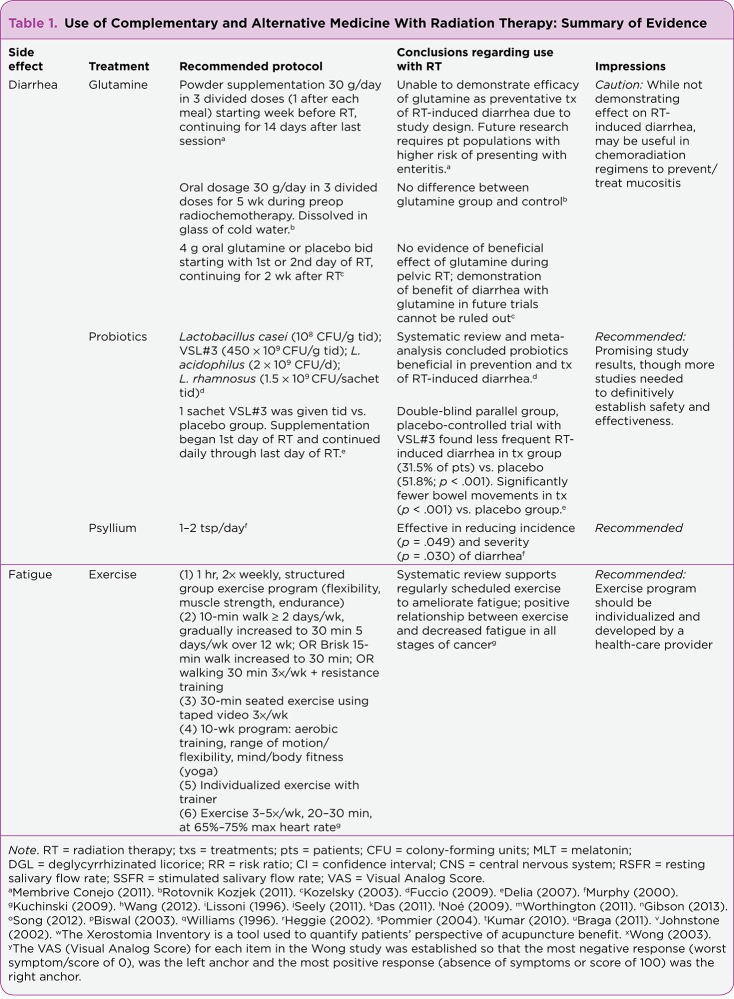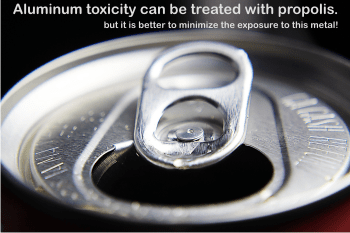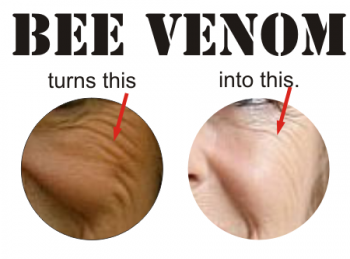My previous article was about the necessity of being exposed to radiation, but asked how to counteract the bad side-effects of it. Here are some natural products that help us minimize the side effects.
Coming from the necessary X-Ray examinations, from Computer Tomography, or from the Radiation Therapy used these days to kill cancer cells, radiations harm our body. It’s a proven fact. The good thing is that there are natural products that help us minimize these horrible side-effects. And yes, the products of the hive are among the most effective ones.
The antiradiation activity of the products of the hive were intensively studied in time. It was shown that such activity is present in:
– propolis (El-Ghazaly and Khayyal, 1995; Takagi et al., 2005; Orsolic et al., 2010; Benkovic et al., 2008),
– royal jelly (GIORDANO et al., 1959; PEJCEV et al., 1965; Wagner et al., 1970)
– bee pollen (Ananeva and Dvoretskii, 1999).
– bee venom (LUDYANSKII, E A (1994), reviewed by Stefan Bogdanov, 2014)
And mostly, take huge amounts of VITAMIN C!
Propolis
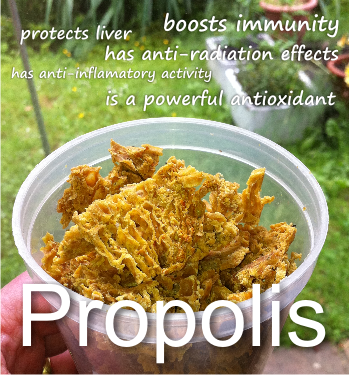 From all types of propolis, poplar and baccharis propolis have been studied and proved to have radiation protective effects, due to their different prenylated p-coumaric acids and flavonoids. Due to its antioxidant properties, propolis has the powerful effect to counteract radiation, as tested in tumor cells or animals.
From all types of propolis, poplar and baccharis propolis have been studied and proved to have radiation protective effects, due to their different prenylated p-coumaric acids and flavonoids. Due to its antioxidant properties, propolis has the powerful effect to counteract radiation, as tested in tumor cells or animals.
Besides, propolis acts also in apoptosis (cell death) of cancer cells, thus improving the anti-cancer effect of radiation. (see also Propolis can prevent and treat LEUKEMIA and CANCER)
Propolis supplementation is prophylactic for liver health and for counteracting the damaging effect of tumor irradiation.
Apimondia.com published the sudy THE INFLUENCE OF PROPOLIS INGESTION ON REDOX STATE OF HUMAN SERUM ALBUMIN: A STUDY OF PATIENTS UNDER SEVERE OXIDATIVE STRESS. Here is the result of the study:
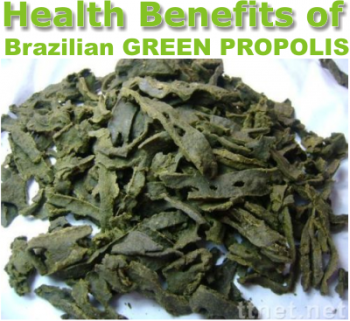 “In the case of a patient with liver cirrhosis and esophageal cancer (male, 68 yr), f(HMA) value before the radiation therapy without propolis ingestion was 66.6%.
“In the case of a patient with liver cirrhosis and esophageal cancer (male, 68 yr), f(HMA) value before the radiation therapy without propolis ingestion was 66.6%.
However, during the radiation therapy for 2 weeks, he took ten propolis tablets/day (525 mg of Brazilian propolis extract/day) every day and continued to take them for more 4 weeks. Values for f(HMA) just before, immediately after, and 4 weeks after radiation therapy, were 63.5, 67.7 and 74.1%, respectively.
These evidences suggest that oxidative status due to the radiation therapy might be attenuated by propolis supplementation. Furthermore, a gradual increase in f(HMA) value indicates that the antioxidant properties of propolis might augment the total antioxidant capacity of the patient with cancer.”
Propolis Protects Intestines from Radiation Exposure
A specially prepared water propolis extract (PWE) managed to preserve the intestinal integrity and largely protected against the changes induced in the histology damage score and all parameters measured, possibly as a result of the antioxidant and anti-inflammatory action of its caffeic acid content.
It was proved in the study Propolis aqueous extract preserves functional integrity of murine intestinal mucosa after exposure to ionizing radiation, by Khayyal MT et al., published in November 2015.
Bee Pollen
• The article What is the future of Bee-Pollen? by Maria Graça R. Campos et al., published in the Journal of ApiProduct and ApiMedical Science in 2010, relates the nutritional and therapeutic claims of bee pollen, supported by scientific based evidence.
Though only a certain proportion of bee pollen constituents is considered to be assimilated by humans, bee pollen is successfully used for certain health benefits due to its antioxidant, anti-inflammatory, and antimicrobial properties. All of these are associated with the presence of flavonoids and the phytosterols.
The conclusion of the study is that “the free radical scavenging activity prevents irradiation damage by free radicals.” This means that an antiradiation effect of pollen should be expected (Pham-Huy et al., 2008). It was established that small x-irradiation doses activated the lipid peroxidation and antioxidant system enzymes in mice liver.
The introduction of a bee pollen extract to the diet of the animals normalized the activity of several glutathione system enzymes in mice liver (Bevzo & Grygor’eva, 1997).
• MURRAY, F showed in his 1991 “Get the buzz on bee pollen”, that bee pollen was effective in reducing adverse effects of radiation used for cancer treatment in a double blind study of 25 women with inoperable uterine cancer.
• In Chinese medicine bee pollen is used for blood formation, reducing cravings for sweets and alcohol, as a radiation protectant and a cancer inhibitor (ULBRICHT, C; CONQUER, J; , G N; KHALSA, K; SKLAR, J; WEISSNER, W; WOODS, J (2009) An Evidence-Based Systematic Review of Bee Pollen by the Natural Standard Research Collaboration).
• In Russia it was shown that ingestion of whole bee pollen or pollen tablets or its extracts reduced of brain hypoxia,
protecting against ionizing radiation, acting against stress and tumour of humans. (see KEDZIA, B (2008) Chemical composition and adaptogenic activity of honeybee collected pollen: part one: Adaptogenic activity.)
• The introduction of a pollen diet as an adjuvant in the reduction of side effects during radiotherapy of patients with gynaecological cancer (15 women with carcinoma of the cervix) received a pollen diet during irradiation, whilst ten further patients receiving irradiation served as controls without pollen added to the diet.
It resulted that pollen favourably influenced the efficacy of irradiation and reduced the frequency of side effects, both subjectively and objectively (see HERNUSS, P; MÜLLER-TYL, E; SALZER, H; SINZINGER, H; WICKE, L; PREY, T; REISINGER, L (1975) Pollendiät als Adjuvans der Strahlentherapie gynäkologischer Karzinome.)
Bee venom
Offers protection from radiation by improving regeneration of leucocytes and erythrocytes, mainly through its compponent: Melittin, but also through the peptides: Secapin, tertiapin, cardiopep, minimin, procamine.
Read more on bee venom: General information or how it can treat HIV, Multiple Sclerosis, Parkinson’s disease, Alzheimer’s disease.
Honey
The application of natural honey is effective in managing and preventing radiation-induced stomatitis in patients with head and neck cancers.
People with head and neck cancer know that the radiation treatment would invariably lead to stomatitis. Here is a study that shows how honey reduces it to zero. Honey and Radiation-Induced Stomatitis in Patients With Head and Neck Cancer. The study is done in Tehran University of Medical Sciences, Tehran, IR Iran, by Bahramnezhad F et al. and was published in October 2015.
To summarize it, the study showed the effect of raw natural honey on radiation-induced stomatitis, in patients with a variety of head and neck cancers. There was a single-blinded nonrandomized controlled trial, conducted on 105 patients undergoing radiotherapy due to head and neck cancer, at the radiation unit of Shafa hospital in Kerman, Iran, from October 2012 to March 2012. There were 3 groups and all patients had to use some mouthwash.
The first experimental group gurgled a solution containing 20 mL diluted honey, the second group gurgled a solution containing German chamomile, and the 35 patients in the control group were advised to gurgle 20 mL water (the ward routine).
The results showed that severe stomatitis was present in the following percentage: in group of honey: 0, in group of chamomile: 5.7%, in group of control: 17.6%. On the 14th day, the percentage was: 0, 0, and 17.6%.
The same category of people undergoing treatment for head and neck cancer also confront with severe oral mucosities. The study Effects of honey on oral mucositis in patients with head and neck cancer: A meta-analysis, by Cho HK et al. and published in March 2015, showes that oral administration of honey after radiotherapy could prevent moderate to severe mucositis and associated weight loss.
Probably the most important article available, that not even accepts the existence of complementary methods of neutralizing the side effects of radiation, but also describes them in detail, is Complementary strategies for the management of radiation therapy side effects. The article is taken from the Journal of the Advanced Practitioner in Oncology, courtesy of Harbormside Press.
Herbs
There have been studies, done in vitro and in vivo, indicating that there are several plats that protect against radiation-induced lethality, lipid peroxidation and DNA damage: Gingko biloba, Centella asiatica, Hippophae rhamnoides, Ocimum sanctum, Panax ginseng, Podophyllum hexandrum, Amaranthus paniculatus, Emblica officinalis, Phyllanthus amarus, Piper longum, Tinospora cordifoila, Mentha arvensis, Mentha piperita, Syzygium cumini, Zingiber officinale, Ageratum conyzoides, Aegle marmelos, Aphanamixis polystachya.
Please see the entire article Radioprotective Potential of Plants and Herbs against the Effects of Ionizing Radiation, by Ganesh C. Jagetia, published in March 2007.
Side effects of radiation therapy and what other supplements fight against them
Diarrhea
50% of patients receiving radiation to the pelvis or abdomen have diarrhea. The incidence is higher with concurrent chemotherapy (according to Muehlbauer et al., 2009).
Diarrhea is a bad condition because it also implies dehydration, electrolyte imbalance, malnutrition, and hospitalization, and it may have a dose-limiting effect.
Here is what fights against it:
Glutamine. Numerous trials support the concurrent use of glutamine with certain chemotherapy regimens in the prevention and treatment of chemotherapy-induced diarrhea as well as the treatment of other chemotherapy side effects.
Probiotics. “The disturbance in the gut flora is one of the mechanisms underlying the pathophysiology of radiation enteritis or colitis.”
Probiotics are the small beneficial microorganisms that populate our gastrointestinal tract and “maintain balance between pro- and anti-inflammatory cytokines” (Visich & Yeo, 2010). They modulate immune activity and epithelial function in the large and small intestines.
Lately these good and helpful tenants have been studied a lot and have been shown to be beneficial for inflammatory bowel disease and irritable bowel syndrome.

Patients in the placebo group suffered more grade 3/4 diarrhea than the probiotic group. There were lots of other studies, on animals and humans, and they all lead to the same conclusion. Probiotics are beneficial to our guts.
The probiotics that brought success in the trials, were:
– VSL#3 capsules containing 450 billion/g of viable lyophilized bacteria, including
· four strains of lactobacilli (Lactobacillus casei, Lactobacillus plantarum, Lactobacillus acidophilus, and Lactobacillus delbrueckii, subspecies bulgaricus),
· three strains of bifidobacteria (Bifidobacterium longum, Bifidobacterium breve, and Bifidobacterium infantis), and
· one strain of Streptococcus salivarius, subspecies thermophilus.
– Infloran capsules containing 2 million L. acidophilus and Bifidobacterium bifidum per capsule.
“… probiotic treatment containing Lactobacillus species may be beneficial
for prevention of chemotherapy – and radiotherapy – induced diarrhea…” (Gibson et al., 2013, p. 315)
Psyllium. Known to reduce cholesterol, these seeds are mainly used as a dietary fiber, as they are not absorbed by the small intestine.
They absorb water and stimulate normal bowel elimination. Although it is more popular as laxative, it is more correct to term it true dietary fiber that reduces the symptoms of both constipation and mild diarrhea.
According to a pilot study in which 60 patients were given 1 to 2 tsp of psyllium powder daily (Murphy, Stacey, Crook, Thompson, & Panetta, 2000) there was a statistically significant reduction in the incidence and severity of diarrhea in the psyllium group.



 Fatigue
Fatigue
Exercise. Mustian et al. showed in a 2007 study that physical activity alleviates acute cancer-related fatigue both during and after completion of radiation therapy. The National Comprehensive Cancer Network (NCCN) guidelines also recommend endurance and resistance exercise during and after treatment for fatigue
Melatonin. Melatonin is our sleep hormone, produced by the pineal gland. Supplements are used for the treatment of insomnia, bad sleep and fatigue. A recent study showed that melatonin showed consistent improvements in tumor remission and 1-year survival, and a reduction in the chemoradiotherapy side effects of neurotoxicity, thrombocytopenia, and fatigue (see Wang et al., 2012).
Mucositis
Having mucositis is worse than it may sound. It “may lead to dose limitation, pain, greater chance of infection, and dysphagia, causing difficulty ingesting food and fluid, thus affecting nutrition and hydration status and leading to possible weight loss”. (Keefe et al., 2007; Worthington, 2011).
What helps?
Deglycyrrhizinated Licorice (DGL). DGL has the glycyrrhetinic acid component (known to possess hypertensive properties) removed, making it recognized as safe by the US Food and Drug Administration.
Clinical trials have shown DGL to be as effective in healing gastric and duodenal ulcers as carbenoxolone, cimetidine, and ranitidine (Mills & Bone, 2000). It provided pain relief and accelerated the healing of aphthous ulcers.
Glutamine. New literature demonstrates that glutamine may, in fact, be effective and without severe toxicity. pilot studies regarding dosage guidelines show that 20 to 30 g daily of glutamine in divided doses is effective (Noé, 2009). It is most effective when given at the start of radiation until 2 weeks after completion. There are some cautions that needs to be taken into consideration (eg. hepatic encephalopathy)
Honey. As described at the beginning of this article, honey does a pretty good job in neutralizing mucositis. simple and cost-effective treatment for radiation mucositis.
Skin Toxicity
95% of patients undergoing radiation therapy have it. Patients with a higher risk of skin reaction include those receiving treatment to the breast, perineum, axilla, and face, as well as to areas of disrupted skin integrity such as from surgery, burns, or other lesions.
Studies that show that the available synthetic topical applications have limited benefits.
Aloe Vera. There are studies and studies. Some suggests its effectiveness, some not. Really, it needs to be tried first, as there are not conclusive evidence for either of the results.
Calendula. Compared with trolamine, a nonsteroidal topical agent that enhances skin healing by immunomodulation, the cost-effective, over-the-counter homeopathic calendula ointment was more effective.
Xerostomia – What is this?
This means dryness in the mouth due to lack of normal salivary secretion. Pilocarpine is usually the given drug to treat this, but, as usual, it offers modest effectiveness and an array of adverse cholinergic effects, such as sweating, nausea, rhinitis, and chills.
Acupuncture. It seems that till now, this is the only viable solution. Though it is more unpleasant, it is safer and has no side-effects. It is recommended to use acupuncture prior to and during radiation therapy.
See Braga, Lemos, Alves, & Migliari, and their 2011 study, where it described the trial in which acupuncture was administered twice weekly for 16 to 20 sessions, with very good results.
Please read the entire article, for all studies and cautions in using these supplements.
********************
References and further reading:
· Ananeva T.V., Dvoretskii A.I. (1999) Effect of beta-carotene oil and bee pollen on ion transport in rat brain slices following radiation-chemical exposure, Radiats. Biol. Radioecol.
· El-Ghazaly M.A., Khayyal M.T. (1995) The use of aqueous propolis extract against radiation-induced damage, Drugs Exp. Clin. Res. 21, 229-236.
· PEJCEV P., BOJADZIEV S., MAROVSKI T. (1965) [THE INFLUENCE OF ROYAL JELLY ON THE COURSE OF RADIATION SICKNESS IN WHITE RATS], Folia Med. (Plovdiv. ) 48, 69-73.
· Wagner H., Dobler I., Thiem I. (1970) [Effect of food-juice of the queen bee (royal jelly) on the peripheral blood
and the survival rate of mice after whole body x-irradiation], Radiobiol. Radiother.
· Functional and Biological Properties of the Bee Products: a Review, by Stefan Bogdanov, Bee Products Science
· SHKENDEROV, S; IVANOV, T (1983) Pcelni Produkti, The Bee Products (in Bulgarian). Zemizdat (Abstract in Honey bibliography): 1-238.
· SON, D J; LEE, J W; LEE, Y H; SONG, H S; LEE, C K; HONG, J T (2007) Therapeutic application of antiarthritis, pain-releasing, and anti-cancer effects of bee venom and its constituent compounds. Pharmacology & Therapeutics 115 (2): 246-270.
· URTUBEY, N (2005) Apitoxin: from bee venom to apitoxin for medical use. Termas de Rio Grande Santiago
del Estero, Argentina.
· BUTNARIU, M V; GIUCHICI, C V (2011) The use of some nanoemulsions based on aqueous propolis and
lycopene extract in the skin’s protective mechanisms against UVA radiation. Journal of
Nanobiotechnology
· Pollen: Production, Nutrition and Health: A Review by Stefan Bogdanov
· pictures of the “Use of Complementary and Alternative medicine with Radiation Therapy” source: http://www.ncbi.nlm.nih.gov/pmc/articles/PMC4093430/
· https://www.ncbi.nlm.nih.gov/pubmed/25032003
· https://en.wikipedia.org/wiki/Psyllium
“Ginkgo Biloba Leaves – Black Background” by James Field (Jame) – Own work. Licensed under CC BY-SA 3.0 via Commons – https://commons.wikimedia.org/wiki/File:Ginkgo_Biloba_Leaves_-_Black_Background.jpg#/media/File:Ginkgo_Biloba_Leaves_-_Black_Background.jpg


